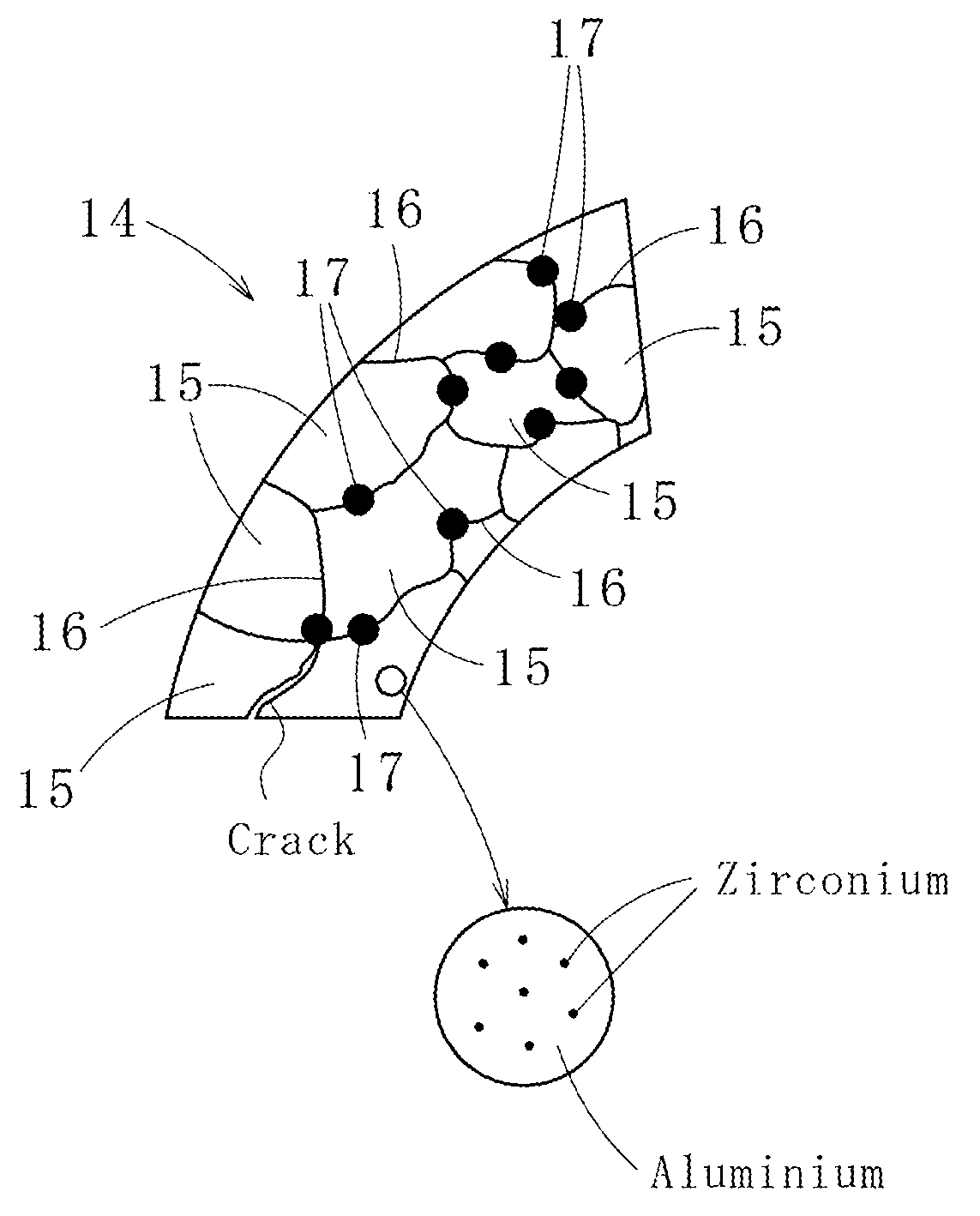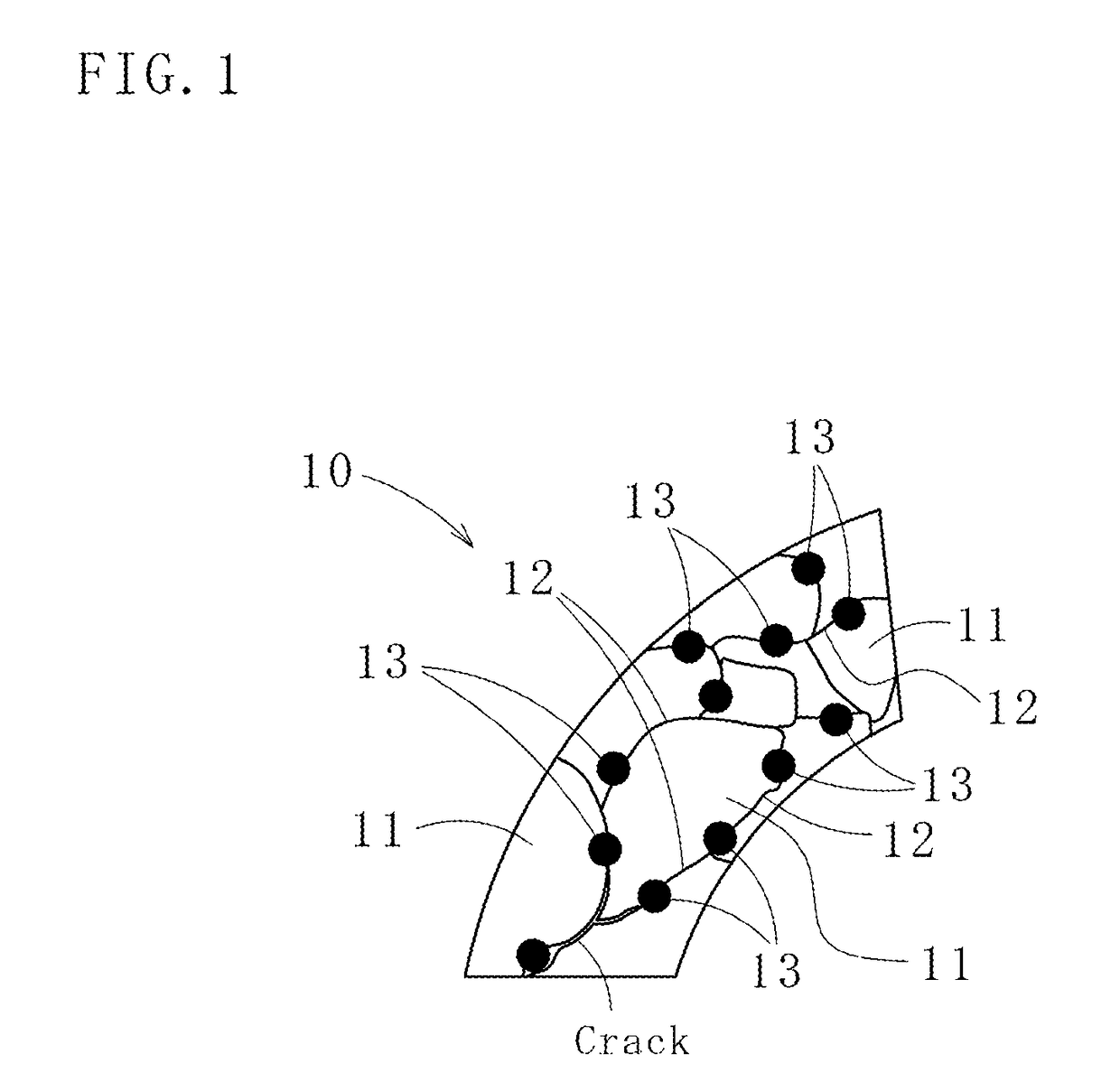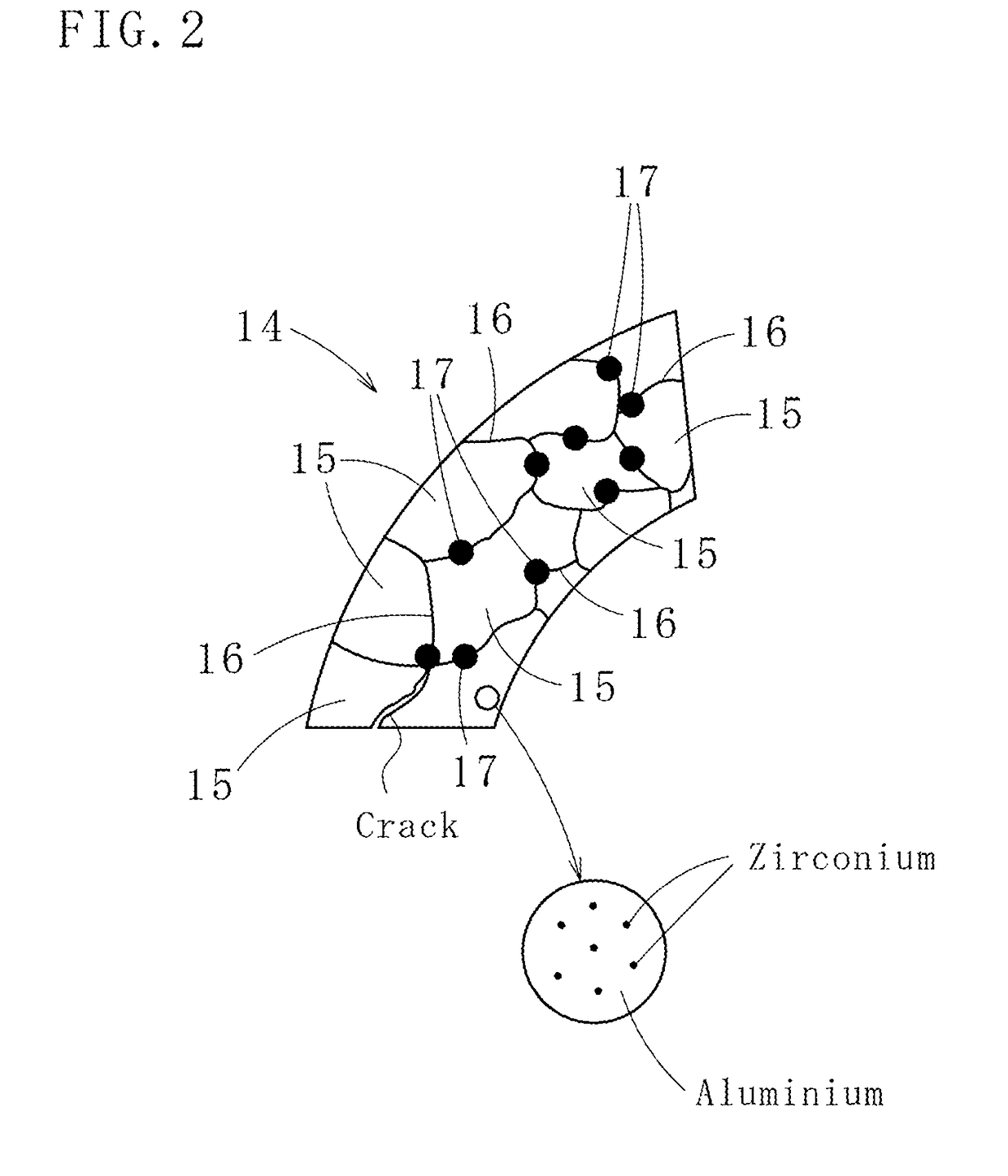Aluminum-based conductive material and electric wire and cable using the same
a technology of conductive materials and electric wires, which is applied in the direction of conductive materials, metal/alloy conductors, and conductors, etc., can solve the problems that the robot cannot be operated stably for a long time, and achieve the effects of promoting the growth rate of cracks in one direction, promoting the growth rate of cracks, and promoting the cracks. divarication and deviation
- Summary
- Abstract
- Description
- Claims
- Application Information
AI Technical Summary
Benefits of technology
Problems solved by technology
Method used
Image
Examples
experimental examples 1-6
, COMPARATIVE EXAMPLES 2-4
[0095]With use of aluminium having a purity of 99.95 mass % and scandium having a purity of 99 mass %, aluminium alloys containing 0.05 to 5.0 mass % of scandium were each cast to produce a conductive material block. Subsequently, after the conductive material block was subjected to an aging treatment at 350° C. for one hour, a wire rod having a diameter of 10 mm was collected by a cutting work, and the collected wire rod was molded into a wire having a diameter of 2 mm with use of a swaging machine. Subsequently, after the wire was subjected to a heat treatment at 450° C. for one hour, the wire was subjected to a die wire drawing work to produce a drawn wire material having a diameter of 80 μm. From metal texture observation of the drawn wire material, it was found out that the average crystal grain size of the crystal grains forming the metal texture was 2 μm, and the ratio of the crystal grains of 1 μm or less was 20% in a cross sectional ratio. Also, in...
experimental example 7
[0100]With use of aluminium having a purity of 99.95 mass % and scandium having a purity of 99 mass %, an aluminium alloy containing 0.3 mass % of scandium was cast to produce a conductive material block. Subsequently, after the conductive material block was subjected to an aging treatment at 350° C. for one hour, a wire rod having a diameter of 10 mm was collected by a cutting work and subsequently molded into a wire having a diameter of 1 mm with use of a swaging machine. After the wire was subjected to a heat treatment at 450° C. for one hour, the wire was subjected to a die wire drawing work to produce a drawn wire material having a diameter of 80 μm. From metal texture observation of the drawn wire material, it was found out that the average crystal grain size of the crystal grains forming the metal texture was 2 μm, and the ratio of the crystal grains of 1 μm or less was 20% in a cross sectional ratio. Also, nanoprecipitates of Al3Sc having a grain size of 20 nm existed in the...
experimental example 8
[0101]With use of aluminium having a purity of 99.95 mass % and scandium having a purity of 99 mass %, an aluminium alloy containing 0.3 mass % of scandium was cast to produce a conductive material block. Subsequently, after the conductive material block was subjected to an aging treatment at 350° C. for one hour, a wire rod having a diameter of 10 mm was collected from the conductive material block by a cutting work, and the collected wire rod was molded into a wire having a diameter of 1.5 mm with use of a swaging machine. Subsequently, after the wire was subjected to a heat treatment at 450° C. for 0.5 hour, the wire was subjected to a die wire drawing work to produce a drawn wire material having a diameter of 80 μm. From metal texture observation of the drawn wire material, it was found out that the average crystal grain size of the crystal grains forming the metal texture was 2 μm, and the ratio of the crystal grains of 1 μm or less was 15% in a cross sectional ratio. Also, nan...
PUM
| Property | Measurement | Unit |
|---|---|---|
| grain size | aaaaa | aaaaa |
| grain size | aaaaa | aaaaa |
| grain size | aaaaa | aaaaa |
Abstract
Description
Claims
Application Information
 Login to View More
Login to View More - R&D
- Intellectual Property
- Life Sciences
- Materials
- Tech Scout
- Unparalleled Data Quality
- Higher Quality Content
- 60% Fewer Hallucinations
Browse by: Latest US Patents, China's latest patents, Technical Efficacy Thesaurus, Application Domain, Technology Topic, Popular Technical Reports.
© 2025 PatSnap. All rights reserved.Legal|Privacy policy|Modern Slavery Act Transparency Statement|Sitemap|About US| Contact US: help@patsnap.com



